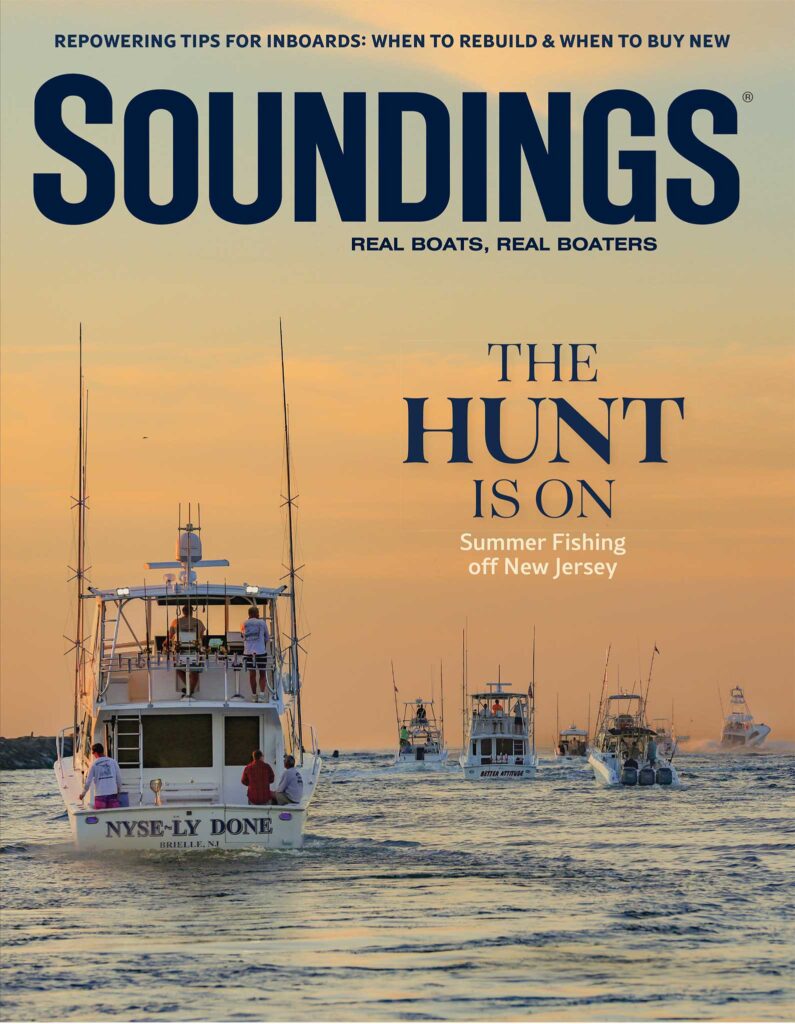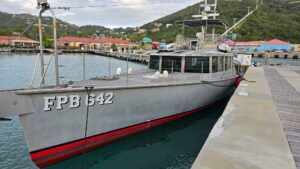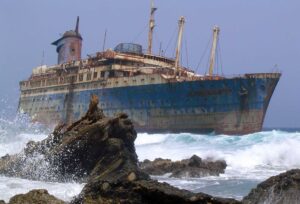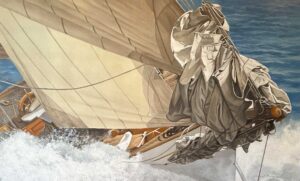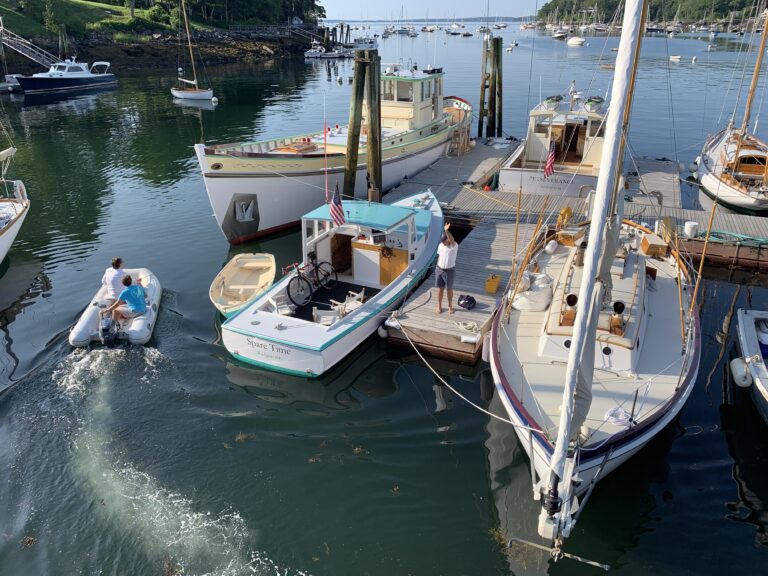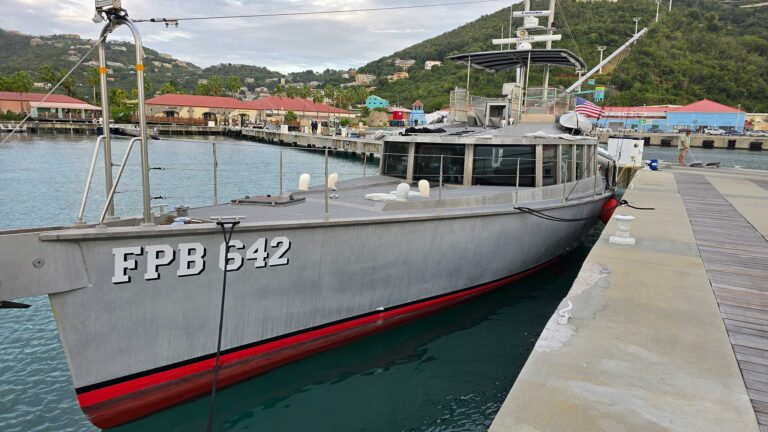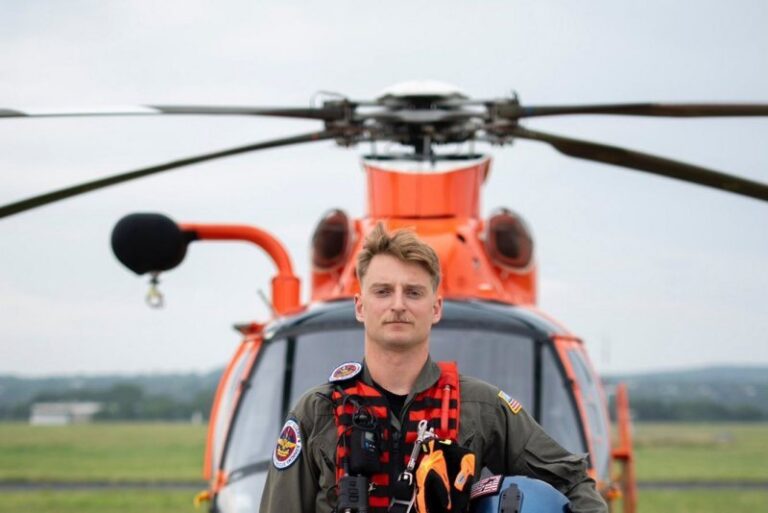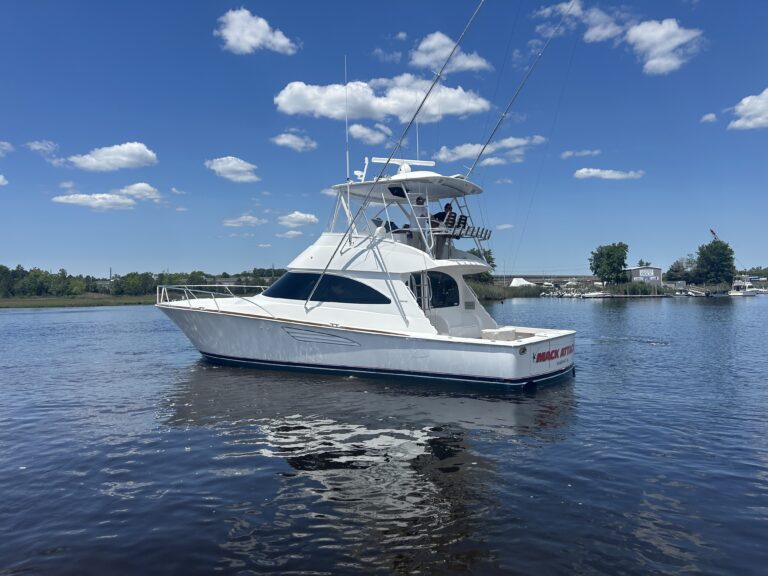Maritime museums aren’t considered hotbeds of radical thinking and action. They tend to move conservatively, even ponderously. So, when the search committee for a new president at the Chesapeake Bay Maritime Museum (CBMM) in St. Michaels, Maryland, presented Kristen Greenaway as the top candidate to the board, there was some consternation.

“Three of them got really upset about this and stood up and said, ‘Look, you can’t appoint this person,’” says Greenaway, a native of New Zealand. She describes it in her usual fashion, words tumbling like a waterfall, dialogue back-and-forth, the storyteller on a roll.
“Well, why not?”
“We’ve never had a woman in that position. You just can’t have that. And, she’s a foreigner.”
“But, she is an American citizen now.”
“Dodgy accent. And she’s gay.”
“Dead silence on that one,” Greenaway continues, and then grins.
As challenges go, this was a big one, even for a woman who thrives on the edge. It was a little ironic, but the life she spent trekking the globe and disregarding anything resembling glass ceilings, professionally and personally, had led her to a charming, culturally conservative town on Maryland’s Eastern Shore. There, she’s energized and empowered a museum dedicated to the water life she was born to—just in a country on the other side of the world.

“This is my Everest, in many respects,” she says. “And I believe I’m absolutely the right person for this position.”
It’s been six years since Greenaway won over the board and landed the job, and the museum has reached a dynamic moment that’s palpable as soon as you follow her long strides out to the shipyard facing the Miles River. While it’s always hummed with restoration projects and small-craft boatbuilding, the shipyard is now buzzing with 17 shipwrights, up from 10 a year ago, in a space that has expanded from 20,000 to 25,000 square feet—all to fulfill a $5 million contract from the state, awarded last year, to build a new reproduction of the Maryland Dove, the 17th-century trading ship that accompanied the first European settlers to what is now Maryland.
To help inform and promote the build, Greenaway last summer sent CBMM’s lead shipwright Joe Connor and rigger Sam Hilgartner to the Viking Ship Museum in Denmark and the Vasa Museum in Sweden for first-hand research. The pair documented their trip and the skills they would bring back to Maryland in a series of entertaining YouTube videos, “Sam & Joe’s Excellent Adventure.”

The yard’s work is supported by the museum’s growing emphasis on public education through the Apprentice for a Day program, which invites volunteers to participate in everything from blacksmithing to lofting, to restoring the 108-year-old tug Delaware, and building blocks, fasteners and other gear for the Dove. “It’s not passive history,” Greenaway says. “It’s got to be hands-on, and you have to feel that you have an opportunity to be a part of this. You’re not just standing there watching our shipbuilders.”
This is a quintessential mission for a woman who wouldn’t know how to “just stand there” if breathing depended on it. By any measure, Greenaway lives her life headlong, barely contained. Ambitious, gutsy, she embodies that Kiwi ethos of dogged determination coupled with a kind of fearless, insouciant embrace of possibility. The idea that it can’t be done just isn’t in the calculus.
It’s a recurrent theme in her life story. There was the time she cold-called two top businesswomen in New Zealand after graduating university, asking them if they could spare a little time to tell her how they’d gotten to where they were. One of them helped her land a job as national marketing manager for the international accounting firm then called Coopers & Lybrand (now PricewaterhouseCoopers). She was 24.
Four years later, she literally jumped ship (after first securing a new position with the firm in London) when she spotted an advertisement for an all-women’s entry in the Auckland-Fukuoka yacht race that needed one more sailor. “So, Monday morning I am in my silk dress, lipstick and heels, and I ran down to the boatyard, climbed up the ladder, knocked on the hull and said, ‘Here I am! I’m your woman!’ And the chap said, ‘Right, tell me about your sailing experience.’ I told him and he said, ‘Right you’re hired. Can you leave in two weeks?’ And I said, I actually can.”

The race—6,000-plus miles, two months, three legs—would be a life experience for anyone. Greenaway took something more from it, after a tactical mistake on her part cost them dearly in the race’s final days. “May I never have that lack of courage to make a crucial—the right—decision again. I’ve never forgotten that.” When she came to CBMM and encountered the photographic essays of Robert de Gast, she realized that she wanted to complete her master’s degree, which she had started while working as development director at the Nasher Museum of Art at Duke University. She wanted to explore how sense of place is so integral to human connection with landscape, art and culture. But she needed a boat to circumnavigate the Delmarva Peninsula in de Gast’s wake, so she called her friend and CBMM board member Libby Moose, and asked to borrow her 22-foot Grady-White boat.
“I said, ‘Where are you going?’’’ Moose remembers. “She said, ‘I’m going around Delmarva.’ And I said, ‘OK, you can borrow my boat, but I’m going with you.’ I think we planned less than a week for that trip. It’s amazing how many people I know who were so envious.”
Greenaway comes honestly by her native restlessness. Her mom and dad—a teacher and a furniture maker, respectively—bundled her and her little sister aboard the 32-foot wooden sailboat her father built, spending formative wonder years exploring New Zealand’s Bay of Islands. “We lived on the smell of an oily rag for many, many years. All the money went into the boat,” she says. “Yeah, we grew up without shoes. Most kids in New Zealand did.” Even on winter break from school, for years after returning to land, the family would take off and head for the Mercury Islands, a small island chain off New Zealand’s North Island, where Greenaway and her siblings later would spread their parents’ ashes. “You’d come back to school and everyone would say, ‘What did you do over the holidays?’ And we were the only ones who had gone away and had a great adventure.”
In the 1980s, she fell in love with trekking and then mountaineering. Her first real high-altitude alpine effort was Mont Blanc, at 16,000 feet, the highest peak in the Alps. She convinced the expedition leader with the pitch: “I’ve never climbed before, but I can shimmy up any tree, I take instructions well, I’m bloody fit and I want to come on this trip.” Eventually, she discovered the book Feeding the Rat about renowned climber Mo Anthoin. There, she found a name for this thing that drove her. The rat, according to Anthoin, is you, really. It’s the other you, and it’s being fed by the you that you think you are. You have to keep feeding the brute, just for your own peace of mind. Even if you did blow it, at least there wouldn’t be that great unknown. But to snuff it without knowing who you are and what you are capable of, theorized Anthoin, would be incredibly sad.

“I read that 30, 40 years ago?” Greenaway muses. “And I’ve always equated everything I do to having to feed this rat by doing these adventures.” She talks about competing in the Everglades Challenge, an 8-day, unsupported expedition race for human-powered craft, which even by its own description is a dangerous event.
“It’s 300 miles from Fort DeSoto outside St. Pete to Key Largo and through the wilderness. You’re paddling anywhere from 18 to 21 hours a day to get that distance and you’re pretty much on your own. I haven’t felt the need to do it the last couple of years, and it dawned on me that running this museum, helping to manage this museum with an incredible team, that’s feeding my rat. That’s how I’m having that inner need satiated.”
Moose, who has since traveled with Greenaway on a second powerboat adventure—this time down the Intracoastal Waterway to Georgetown, South Carolina, on Moose’s new boat, a Grady-White Freedom 235—says Greenaway is putting the museum on a larger map.
“We don’t want to be a little village of historic older buildings and boats. We want to be a world-class museum that’s active.” Greenaway, she says, “has got a goal and she’s going to get to it. She just empowers people in a way I can’t explain. I think a lot of it has to do with her past, her ability to jump on a boat and sail from New Zealand to Japan. She just knows her own mind and what she can do, and she can see a way forward.”
Along with winning the Dove contract, last year the museum also earned state and federal accreditation for its shipyard apprenticeship program as a four-year, 8,000-hour education certification path in traditional maritime trades. Greenaway hopes this will become a natural pathway for what she calls her baby, the Rising Tide after-school program. Now in its fifth year, with some 150 local youngsters, the program provides free boatbuilding classes, camps, events and a variety of hands-on programs to encourage teambuilding and STEM skills.

“We’re not just a museum anymore, we’re a certified workforce training program, in many respects,” she says. “Our commitment to preserving the heritage of the Bay also is accompanied by assuring we retain these traditional skills, and we’re an economic driver on the Eastern Shore. That’s something I feel very passionately about.
“I came with a vision of social responsibility, which I believe creates social capital. Our very first step was to re-engage the community, which despised us for want of a better word. There was no connection whatsoever,” she says. “We have now over 100 partnerships in the community.”
Meantime, in late December, the museum’s shipwrights were preparing to raise the final frame and lay the keelson in Maryland Dove, an exciting turning point in the creation of any vessel. It’s not surprising to find Greenaway here more often than not. In the pale light of the cool early morning, it’s a place of possibility and beauty, of wondering after that great unknown.
This article originally appeared in the March 2020 issue.

